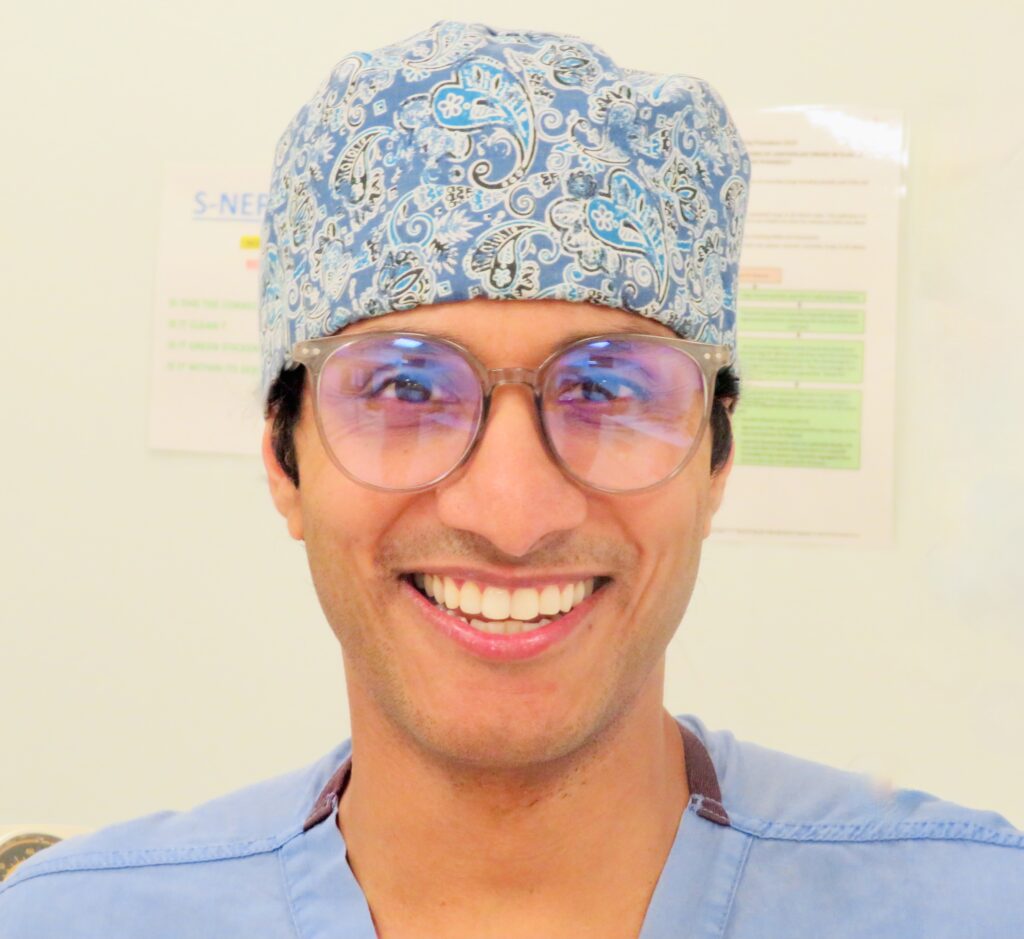The word ‘anaesthesia’ means ‘without sensation’. General anaesthesia is a combination of medicines that are administered using injections through veins or inhaled gasses, that puts you in a controlled state of unconsciousness so that you cannot feel any pain.
Before your operation, the anaesthetist will meet with you to discuss your medical history and personalise the anaesthetic to you and the operation that you are having. When it is time for your operation you will be transferred to the anaesthetic room adjacent to the operating theatre. The consultant anaesthetist and anaesthetic practitioner (a trained specialist who helps to plan and deliver anaesthesia with the doctor) will remain with you throughout the operation and they will observe your pulse, blood pressure and breathing with monitoring devices the entire time that you are under anaesthesia.
The anaesthetist may initially inject anaesthetic medicines into one of your veins through a fine plastic tube called a venous cannula. The cannula will be placed in the back of your hand or in the arm and it can be used to administer medicines or fluids without further separate injections. The anaesthetist may ask you to breathe anaesthetic gases in place of or in addition to medicines through the veins. The anaesthetic will make you fall asleep, and the anaesthetist will place a tube in your mouth to help support your breathing. Once the operation is finished the anaesthetic will be stopped and the anaesthetist will wake you up safely.
You will be in the recovery room next to the operating theatres when you wake up and you will continue to receive oxygen through a mask and fluids through the cannula. A specialist nurse will continue to monitor you until your anaesthetist is happy that your pulse, blood pressure and breathing are stable. You will then be transferred safely back to your ward.
You may experience common side effects from general anaesthesia when you wake up, which may include nausea and vomiting (but medications are usually given to prevent this), shivering and sore throat.
In modern anaesthesia serious problems are uncommon. Risk cannot be removed completely, but the use of modern equipment and medicine, together with ongoing training, has made anaesthesia extremely safe in recent years. For detailed and extensive information on all aspects of anaesthesia, including further advantages, disadvantages, and detailed risks, please visit the Royal College of Anaesthetists: https://rcoa.ac.uk/patient-information.

